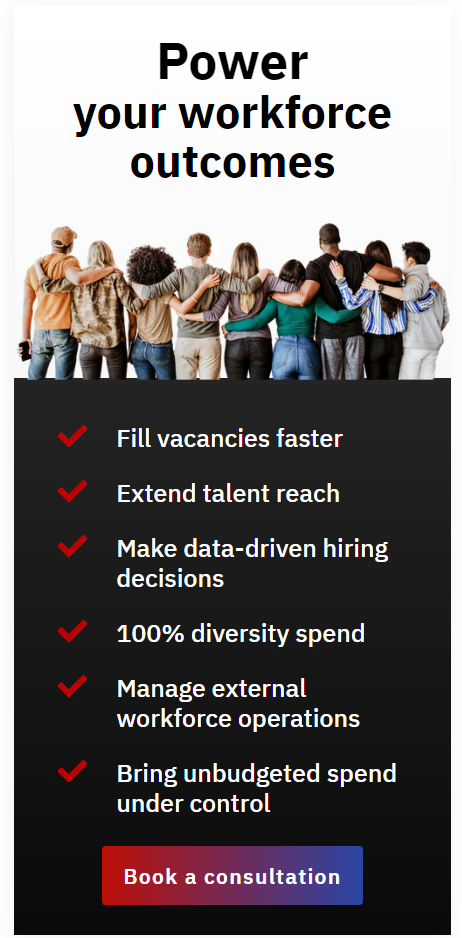Three flexible workforce trends for 2021 to ignore at your peril.
2020 has remodeled how millions of people around the world think about the world of work—where we work, how we work, the tools we use, WHY we work. There’s no reason to believe such fundamental shifts in attitudes will change over time. In this article, we take a look at what 2021 holds in store for the talent industry.
2020 – When the World of Work Went Home
Back in March 2020, everyone was asked to isolate at home to protect themselves from COVID-19. Company bosses had to come to terms with trusting their people to work on their own initiative, bunking down in their homes to weather the storm. Surprisingly, in most cases, productivity wasn’t heavily impacted. Some argued it had improved.
Within 6 months, big corporates were telling their people not to bother coming back in a hurry. Then began the great property sell off, as hundreds of corporations began the task of offloading their property portfolios. The mood was best captured in the words of Dirk Van De Put of food giant Mondelez, who in a November 2020 interview with CNBC commented, “the coronavirus crisis has showed “we can work in different ways,” and as a result, the company does not need all its global offices.
Open floor plans are now dead. A new future of the office begins.
2021 – A Year to Re-Imagine the World of Work
Workspend is a diverse Managed Service Provider (MSP) and our team of flexible workforce practitioners and program managers spend work with employers to source the talent they need. Here are three key trends our experts predict will emerge in 2021.
1. A Flexible Workforce Becomes the Next Normal
Not so long ago, flexible (also called contingent) workers were seen as temporary resources to call on to fill gaps in the full-time workforce. COVID-19 made it clear the consequences of operating inflexible staffing strategies.
Today, companies must be agile in order to adapt to market forces and unpredictable environmental factors that lead to seismic changes in customer values, preferences, and product/service demands. The 2020 pandemic has finally fractured any misinformed beliefs that full-time employment is the best/only option when it comes to getting work done.
In 2021, expect to see Talent Strategies embrace agendas, systems and processes that include both flexible and full-time workers. This shift in expectations and outlook will impact on approaches to sourcing, procurement decisions on the sort of staffing vendors needed, and the types of technologies required to automate processes.
We’ll also see new processes and organizational design structures like triage/change teams (sometimes called fusion teams) that combine change management, procurement, HR and IT skills to manage perpetual programs of talent sourcing.
2. Growing Adoption of Direct Sourcing and Statement of Work
A growing flexible workforce agenda is only going to add more weight to arguments to ‘cut out the middle man’ and employ technology to source talent directly. Modern approaches to talent sourcing—that allow companies to serve up their vacancies and micro-task needs to a growing audience of contracted workers—will continue to grow in popularity.
Already in 2020, we’ve seen early adopters of Direct Sourcing (where companies offer jobs via a job portal via their social media sites on Facebook, LinkedIn, Instagram, etc.) wax lyrical about the vast sums they are saving on agency fees.
3. More outsourcing of the workforce management function – but on more flexible terms
Ongoing discussions with our customers, partners, and prospects suggest that partnering and outsourcing are likely to increase in 2021. There are a few good reasons for this:
- Companies identify that a highly regulated workforce management environment calls for expert know-how and skills to avoid falling foul of new labor and data privacy laws.
- Digital technology is essential to drive best practices and innovation. The increased use of AI is adding opportunity and cost to the resourcing of workforce management programs. Companies are choosing to invest in the latest technology through service-led contracts that require providers to serve up the technology as part of their offer and deliver real outcomes, not promises.
- Flexible workforce management continues to demand a lot of administrative support best served by working through a Shared Service Centre (SSC) facility that MSPs like Workspend have at their disposal through onshore, nearshore, and offshore facilities to optimize client needs. Sourcing these capabilities through an expert provider makes more sense than employing people onsite to manage and administer programs when such functions add little to customer service experience or customer value.
Diana Doro, Vice President of Sales
“It’s no secret that 2020 put a focus on where companies could find efficiencies and cost controls – most of the customers I speak to feel like they’ve learned that this year taught us to expect anything, including top-down directives to make sweeping changes to processes that before COVID were ‘not broke don’t fix them’. Now that the year is coming to an end, to carry over these hard-learned lessons, companies are adopting a more total approach to their workforce, and looking to their MSP to be real guides through the fog for what we can take away from 2020 and improve next year. Trimmed down processes, best-in-class sourcing solutions, new technology to better manage the supplier relationships – all are outcomes from the past year that can create continuous improvement. And improved hiring strategies as well – this total look at talent includes things like flexible work from home for the contingent population, automating the IC Compliance process through AI, incorporating a managed statement of work strategy in their MSP (where previously that category is almost always excluded) and wrapping full time talent into the pool to source from, not just external. These most certainly will re-shape this industry in the coming year, and the role the MSP plays in consulting to the talent marketplace and how to best hire for future openings and drive value for their customers.”
Summary
Vaccines are being deployed and businesses are beginning to make plans for a more prosperous New Year. 2021 will not be like the year we’ve just been through, although the ‘next normal’ attitudes and behaviors will live on. While almost none of us expect markets to revert to pre-2020 health—or to find ourselves back commuting every workday for a 9-to-5 shift—those digital leaders and innovative companies operating a flexible workforce will be first in line to cash in on the opportunities that come from the 2021 global market reboot.
CONTACT US ABOUT A FLIPCHART SESSION TODAY

Ian Tomlin is a management consultant and writer on the subject of enterprise computing and organizational design. He serves on the Workspend Management Team. Ian has written several books on the subject of digital transformation, cloud computing, social operating systems, codeless applications development, business intelligence, data science, office security, customer data platforms, vendor management systems, Managed Service Provisioning (MSP), customer experience, and organizational design. He can be reached via LinkedIn or Twitter.

